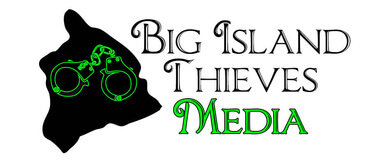
Sea urchins and some fish species are critical for helping protect and restore Hawai‘i’s coral reefs which are facing serious threats due to warming oceans and coral bleaching. The DLNR Division of Aquatic Resources (DAR) is holding a series of virtual scoping meetings to compile input on increasing the management of key herbivores.
Why are herbivores important?
Coral reefs provide habitat for many fish that sustain Hawai‘i’s people. These reefs rely upon abundant populations of herbivores to remain healthy. Herbivores play a critical role in maintaining the delicate balance between coral and algae on reefs. Herbivorous fish and urchins graze reefs to prevent them from becoming overgrown with algae. These cleared surfaces are ideal for coral larvae to settle and grow.
Herbivorous fish are a culturally important food source. Catching and eating these fish is a part of Hawai‘i’s local culture as well as an important contributor to the islands’ food security. Fishing brings communities together to spend time with our friends, teach our keiki, and feed our neighbors and ʻohana, providing more than 7 million meals each year. As a primary catch for many nearshore fishers, herbivores are also economically valuable to the Main Hawaiian Islands.
Why is additional management needed?
Additional management through regulations help ensure responsible and sustainable fishing practices. By limiting the number and/or size of fish that are caught at one time, communities can benefit from more plentiful fish stocks in the future. Regulations ensure fair and sustainable fishing. The Kahekili Herbivore Fisheries Management Area on Maui is a good example of how well-thought out management helps restore and protect critical fish populations. At Kahekili it is prohibited to fish for any herbivorous species, including sea urchins. Since this area was established in 2009 there has been a 139% increase in parrotfish and a 28% increase in surgeonfish. These increases mean more fish are available to catch outside of the management area; this is called spillover.
What are the options?
There are many options that can be considered to increase protections for herbivores. Some examples include:
- Bag limits (each fisher may only catch and keep a certain number at a time)
- Size limits (a fish may only be caught and kept if it is under or over a certain size)
- Gear regulations (only certain types of fishing equipment like pole and line are allowed in certain areas)
- Time-area or seasonal protections (fishing/harvesting is only allowed during certain times of the day or of the year).
How to get involved?
- DAR wants input A series of virtual meetings will give people an opportunity to provide feedback on management options and help shape future herbivore protections. Feedback can also be provided through email or phone. Please go to https://dlnr.hawaii.gov/dar/30×30/ for more information and to register for virtual scoping meetings on each island. Be part of the discussion and let your voice be heard on the importance of protecting herbivores to help protect our reefs
- Fish responsibly and encourage others to do the same. Start by taking only what is needed for consumption.
- Report fishing violations to 643-DLNR or via the free DLNRTip app.
Virtual Scoping Meetings
- Kauaʻi- Nov. 17 and Dec. 1, 5:30-7:30PM
- Oʻahu- Nov. 17 and Dec. 2, 5:30-7:30PM
- Maui Nui- Nov. 10 and Nov. 24, 5:30-7:30 PM
- East Hawaiʻi Island- Nov. 12 and Dec. 10, 5:30-7:30PM
- West Hawaiʻi Island- Nov. 10, 10:30AM-12:30PM & Dec. 3, 5:30-7:30PM

